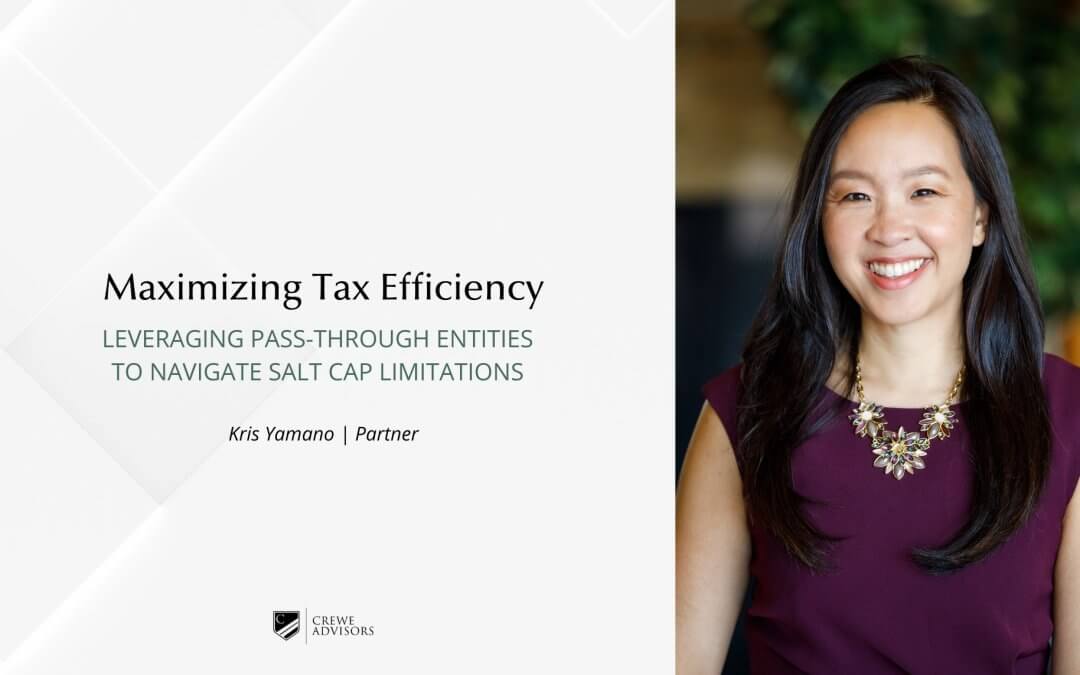With the year drawing to a close, it’s a time of festivities, reflection, and, yes, tax planning. While taxes might not be as exciting as the first snow or holiday lights, a little foresight can lead to significant savings. Check out our list of simple yet powerful tax strategies you can employ before the year draws to a close:
Reflect On Changes And Take Stock Where You Currently Are.
First and foremost, take stock of any life changes. Did you get married? Have a baby? Buy a house? Start a business? Close a business? Significant life events can substantially impact your tax situation. Understanding these changes will set the foundation for your planning efforts.
Maximize Retirement Planning.
- Individual: One of the most straightforward tax-saving strategies is to contribute the maximum allowable amount to your tax-advantaged retirement accounts, such as IRAs or 401(k)s. Not only will this help set you up for a cozier future, but it will also reduce your taxable income for the current year. This is also a great time to confirm that you’re still on track for retirement goals. If you’re in a lower tax bracket this year than you expect to be in the future, consider converting a portion of your traditional IRA to a Roth IRA. While you’ll pay taxes now, future withdrawals from the Roth IRA will be tax-free.
- Small Businesses: SEP IRAs and Solo 401(k)s cater to self-employed individuals and small businesses, offering higher contribution limits than traditional IRAs and 401(k)s. They offer flexible contribution amounts, making them especially attractive for year-end tax planning strategies.
Leverage Tax Deductions.
- Individuals: While standard deductions can benefit many, itemizing could yield more significant deductions for others. Analyze potential deductions like mortgage interest, state and local taxes, or charitable contributions. Consider prepaying some deductible expenses if you’re close to the threshold where itemizing becomes beneficial. This might include January’s mortgage payment, state taxes, or medical bills.
- Small Businesses: For business owners, stay updated on specific deductions you can claim, such as the Qualified Business Income (QBI) deduction or deductions related to research and development. Focus on optimizing the 20% QBI deduction for qualified income from pass-through entities. Business owners have a vast landscape of potential deductions, from home office expenses to business-related travel or equipment purchases; ensure you capture all eligible deductions. Remember to keep detailed records and receipts.
Harness Investment Strategies.
If you hold investments outside of retirement accounts, now’s the time to review them. If some of your investments haven’t performed well, consider selling them to realize a capital loss. These losses can offset capital gains, potentially reducing your tax liability. However, be wary of the wash-sale rule if you plan to repurchase similar (but not “substantially identical”) assets to maintain your portfolio’s balance while still capturing the tax benefit. Hold off on Mutual Fund Purchases; many funds distribute capital gains at year’s end; if you buy just before this distribution, you might have an unexpected tax bill. Explore investing in Opportunity Zones to defer, reduce, and potentially eliminate capital gains taxes, depending on the duration of their investment, while aiding underserved communities’ economic development.
Be Charitable—But Do It Wisely.
If philanthropy is close to your heart, consider giving in ways that offer the most tax benefits. Donating appreciated stock, for example, allows you to avoid paying capital gains tax on the appreciation while still getting a charitable deduction. Consider contributing or front-loading several years’ worth of charitable contributions to a donor-advised fund, allowing for an immediate tax deduction and flexibility in distributing funds to charities over time. Consider transferring assets into a Charitable Remainder Trust (CRT) and get an immediate tax deduction. The assets then produce income for you over a set period, after which the remaining assets go to a charitable organization. Work with a knowledgeable organization, like Crewe Foundation, to help ensure you maximize your gift’s tax and financial benefits.
Know Your Benefits.
- Individuals: Use up those funds if you have a Flexible Spending Account (FSA). Most FSAs are “use it or lose it,” so ensure you don’t leave any money on the table. For those who qualify, consider maximizing contributions to a Health Savings Account (HSA), which will reduce your taxable income and can roll over from year to year.
- Small Businesses: Offering benefits like Health Savings Accounts (HSAs) or retirement plans can be a win-win for businesses with employees. They provide value to your employees and can offer tax advantages to your business.
Income & Cash Flow Planning.
- Individual: Individuals should focus on upcoming bonuses or other large income flows, review for any available passive activity losses, and strategize when to upgrade their homes. If possible, try to delay income. Ask for bonuses or other income to be deferred until January; this can keep your current year’s income in a lower tax bracket, potentially reducing your tax rate. Review any passive activity losses to ensure you’re making the most of what’s available, especially if you have income from rental properties or other passive investments. Consider making energy-efficient home improvements and research other home upgrades. Not only will this reduce utility bills, but you might also qualify for tax credits.
- Small Businesses: For business owners, analyze your cash flow, leverage business losses, and plan your purchases. Evaluate the merits of adopting the accrual accounting method to recognize expenses and income when they’re incurred rather than paid. This can offer greater flexibility in managing your tax liabilities. If you’ve faced challenges this year and your business incurred a net operating loss, you may be able to carry this loss backward or forward to offset taxable income in other years, potentially resulting in tax refunds. Buying before year-end can lead to valuable depreciation deductions if you’re considering significant capital investments, such as equipment or technology.
This is also an excellent time to evaluate your business entity structure. Whether you’re a sole proprietor, have an LLC, or run a corporation, the structure of your business impacts your tax obligations. Year-end is a good time to assess if your current structure is still the most advantageous for your evolving business.
Gift Thoughtfully.
While gifting to friends and family may feel charitable, unfortunately, it doesn’t qualify as a charitable deduction. Still, there are strategic tools available. You can help your loved ones and reduce the size of your taxable estate through annual gifting. But be familiar with the annual gifting limits; for 2023, the limit is $17,000 per person. Take it a step further by gifting appreciated stock instead of cash, thereby transferring capital gains to the recipient, potentially reducing the tax burden for the giver. Pay attention to the annual gift exclusion amount, or you might be required to file a gift tax return and count against your lifetime gift tax exemption. Maximize 529 Plan Contributions. If saving for a loved one’s education, consider front-loading a 529 Plan. Some states offer tax deductions for these contributions.
Advanced Transfer Tax Planning Techniques.
For investors interested in minimizing estate and gift taxes, there are sophisticated transfer tax planning strategies that go beyond the conventional. These strategies require intricate knowledge and expertise to implement effectively, but proper planning can make a significant difference in the tax bill for high-net-worth individuals, ensuring you’re preserving as much of your wealth as possible. Some of these strategies include. Establish a Family Limited Partnership (FLP) or Family Limited Liability Company (LLC) to manage family assets and achieve potential valuation discounts for gift and estate tax purposes. Utilize Irrevocable Trusts for wealth and estate transfer strategies like Grantor Retained Annuity Trusts (GRATs), Irrevocable Life Insurance Trusts (ILITs) or Spousal Lifetime Access Trusts (SLATs). Explore installment sales or private annuities to spread out tax liability or generate steady income. Both strategies can help mitigate a hefty tax hit in a single year, but they also have risks that should be carefully analyzed.
Final Thoughts.
Tax laws are ever-evolving, and a strategy that worked last year might not be optimal this year. Tax planning is an ongoing process unique to everyone’s situation but can yield significant benefits when approached with foresight and diligence. Reflect on the personal goals you set for the year, evaluate your progress, and set new objectives for the upcoming year. Taking proactive steps now can ensure a smoother tax experience and potentially help find opportunities to grow your wealth. Working with a seasoned tax and financial professional, especially one familiar with your personal and professional circumstances, is essential to making informed decisions, confirming that a strategy aligns with your goals and objectives, and assisting you in capitalizing on all potential tax benefits.










